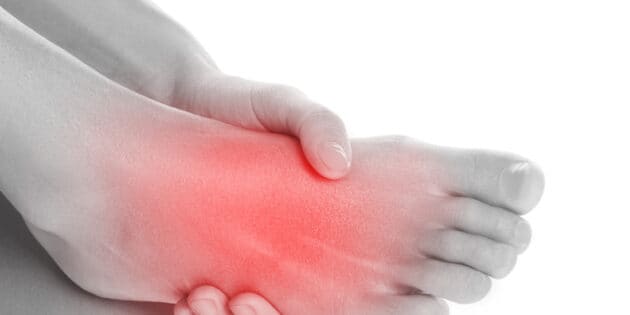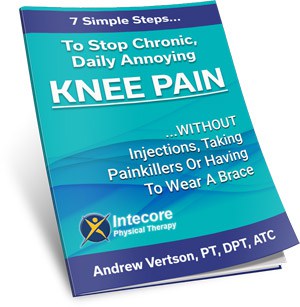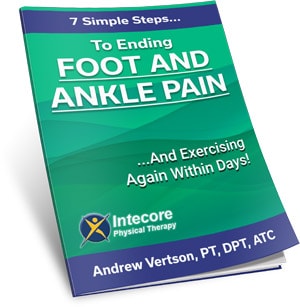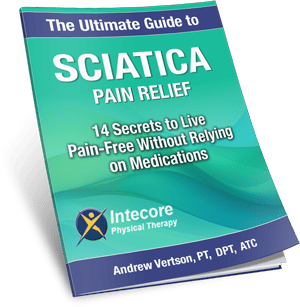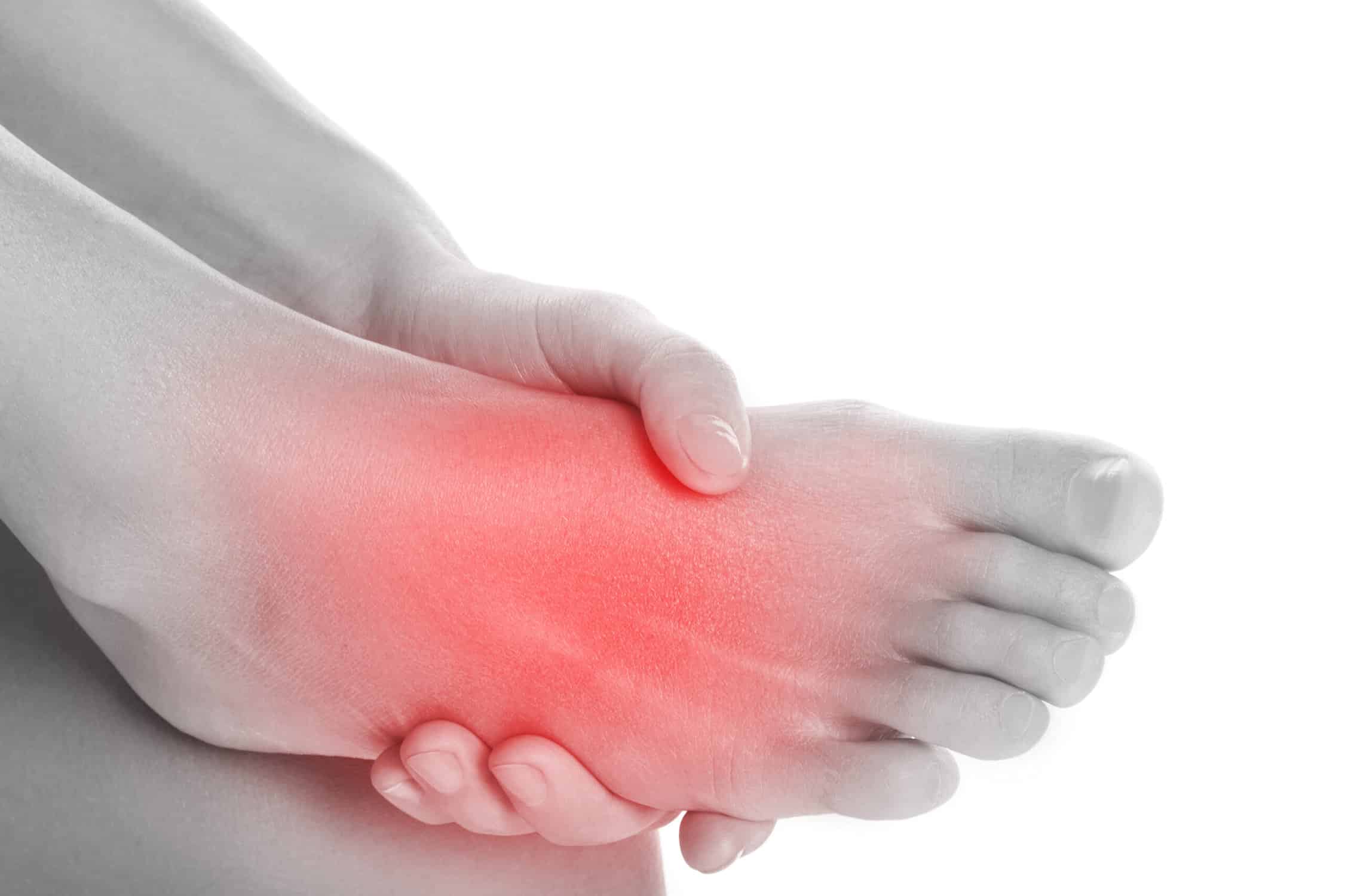
Navigating the complex world of nerve-related conditions can be tricky, especially when it comes to understanding the differences between the different types! As a physical therapist, I often encounter patients who are confused about radiculopathy vs neuropathy, and it’s easy to see why. Though they share some similarities, radiculopathy and neuropathy are distinct conditions with their own set of symptoms, causes, and treatments.
In this blog, we’ll demystify these terms by exploring what sets them apart. We’ll look into the specifics of each condition, how they impact your body, and how to get help.
So, whether you’re trying to figure out which condition might be affecting you or just looking to expand your knowledge, let’s dive into the world of radiculopathy vs neuropathy with clarity and simplicity.
More Posts Like This From Intecore:
What Is Spinal Stenosis, And How Can I Get Relief?
Table of Contents
Radiculopathy vs Neuropathy
What is Radiculopathy?
Radiculopathy might sound like a complex term, but it’s essentially a condition where one or more nerves do not work properly, resulting in pain, weakness, numbness, or difficulty controlling specific muscles. This issue typically occurs near the roots of the spine, where nerve roots exit and branch out to the rest of the body.
Commonly, radiculopathy can cause symptoms like a sharp pain that radiates from the back and down to the legs or arms, depending on which nerve is affected. You might also experience tingling, numbness, or a feeling of ‘pins and needles.’ In some cases, weakened muscles in the affected areas can be a tell-tale sign.
Radiculopathy is often the result of pressure on the nerve roots, often due to a herniated disc or bone spurs in the spine. Sometimes, conditions like spinal stenosis or degenerative disc disease can also be culprits. (You can find out more from Hopkins Medicine here.)
What is Neuropathy?
Neuropathy, on the other hand, refers to general damage or dysfunction of one or more nerves, resulting in similar symptoms like pain, tingling, and numbness. Unlike radiculopathy, which is specific to nerve roots, neuropathy can occur in any part of the nerve, from your toes to your fingertips.
The symptoms of neuropathy can vary but often include sensations of pain, burning, or tingling, especially in the hands and feet. Some people might experience extreme sensitivity to touch or changes in blood pressure and heart rate, depending on the type of neuropathy.
Neuropathy has a broader range of causes compared to radiculopathy. It can stem from diseases like diabetes, infections, inherited disorders, or exposure to toxins. Sometimes, it’s a consequence of injury or infection. (You can discover more here.)
Prevention and Management of Radiculopathy and Neuropathy

While radiculopathy and neuropathy can be challenging to manage, adopting certain lifestyle changes and habits can play a significant role in managing these conditions. Coupled with physical therapy, these strategies can enhance your quality of life and may reduce the risk of developing them
Lifestyle Changes and Habits:
- Regular Exercise: Engaging in regular, moderate exercise can improve overall muscle strength and flexibility, which helps to prevent nerve compression that leads to radiculopathy. For neuropathy, particularly diabetic neuropathy, exercise can help in regulating blood sugar levels.
- Healthy Diet: A balanced diet rich in vitamins and minerals, especially B vitamins, can support nerve health. For those with diabetes, a diet that helps control blood sugar levels is crucial in preventing diabetic neuropathy.
- Proper Body Mechanics: Learning and practicing proper body mechanics, especially when lifting heavy objects or engaging in repetitive tasks, can help prevent undue stress on the spinal nerves.
- Avoiding Smoking and Limiting Alcohol: Smoking can affect circulation, increasing the risk of neuropathy, while excessive alcohol consumption can lead to nerve damage.
- Regular Health Check-ups: Regular check-ups are important, especially for individuals with diabetes or those at risk of conditions that can lead to neuropathy or radiculopathy.
How Physical Therapy Helps Radiculopathy Vs Neuropathy
Physical therapy offers a non-invasive way to manage the symptoms of both radiculopathy and neuropathy. It plays a critical role in enhancing your ability to perform daily activities and in improving your overall quality of life. Physical therapy is not just about symptom management; it’s about empowering you with the tools and knowledge for effective self-care and long-term well-being.
Let’s look at some of the ways physical therapy helps with both…
Physical Therapy for Radiculopathy:
- Targeted Exercises: Central to the treatment of radiculopathy, physical therapy involves exercises tailored to the specific nerve root involved. These exercises aim to strengthen and stretch the surrounding muscles, which can relieve pressure on the nerve and reduce pain and discomfort.
- Pain Management Techniques: Physical therapists utilize a variety of techniques to manage pain associated with radiculopathy. These might include hot/cold therapy, which can reduce inflammation and soothe sore muscles, TENS (Transcutaneous Electrical Nerve Stimulation) for nerve pain relief, and ultrasound therapy to promote tissue healing.
- Improving Flexibility and Posture: Guidance on improving flexibility and posture is a core component of physical therapy. Better posture and flexibility can prevent further nerve irritation and support spinal health, reducing the likelihood of recurring issues.
- Education and Self-Management: A significant aspect of physical therapy is educating patients on self-management techniques. This education includes demonstrating how to perform exercises safely at home and advising on activity modifications to prevent exacerbating the condition.
Physical Therapy for Neuropathy:
- Symptom Management: For neuropathy, physical therapy is centered on managing symptoms and enhancing the quality of life. This includes exercises designed to maintain muscle strength, crucial in helping with neuropathy affecting areas like the hands and feet.
- Balance and Coordination Training: Many individuals with neuropathy struggle with balance due to nerve damage. Here, physical therapists may incorporate balance and coordination exercises into the treatment plan to improve stability and prevent falls.
- Lifestyle Modifications: Advising on lifestyle changes forms a part of comprehensive neuropathy treatment. Physical therapists can offer nutritional guidance, recommend ergonomic footwear, and suggest strategies for safe movement in daily activities.
When to Consult a Physical Therapist for Radiculopathy and Neuropathy
Radiculopathy and neuropathy, with their complex nature and varied symptoms, often require the expertise of a physical therapist for effective management. Knowing when to seek this specialized help is essential for timely treatment and improved outcomes.
1. Persistent Pain and Discomfort:
If you’re experiencing ongoing pain, numbness, or tingling sensations that radiate from your spine to your extremities, it might be indicative of radiculopathy. Similarly, consistent pain or tingling in your hands, feet, or other areas could signal neuropathy. Persistent symptoms that don’t improve with basic home care are a clear sign to consult a physical therapist.
2. Decreased Strength or Mobility:
Radiculopathy and neuropathy can lead to weakened muscle strength, especially in the affected areas. If you notice you’re struggling to perform everyday tasks, or if your mobility becomes restricted due to muscle weakness or pain, a physical therapist can help in restoring strength and function.
3. Changes in Sensation or Balance:
Experiencing changes in sensation, such as increased sensitivity or a decrease in perception due to radiculopathy peripheral neuropathy, especially common in neuropathy, warrants a visit to a physical therapist. Additionally, if you find your balance affected, which can occur in both conditions, seeking professional help is important to prevent falls and improve stability.
4. Management of Chronic Symptoms:
For individuals living with chronic radiculopathy or neuropathy, ongoing physical therapy can be vital in managing symptoms. Regular sessions can help in maintaining mobility, reducing pain, and preventing the progression of symptoms.
5. After Medical Diagnosis:
If you’ve been diagnosed with radiculopathy or neuropathy by a physician, following up with a physical therapist should be your next step. We can work alongside your doctor to create a comprehensive treatment plan tailored to your specific needs.
6. Difficulty Performing Daily Activities:
When pain or other symptoms start to interfere with your daily life – whether it’s working, driving, or engaging in hobbies – it’s time to consider physical therapy. A therapist can provide strategies and exercises to help you navigate daily activities more comfortably.
Ready To Get Relief With Physical Therapy?
If you’ve read this far, you’re likely eager to find lasting relief. The good news is, that physical therapy could be the remedy you’ve been searching for. To find out more, click here to fill out this form and tell us more about what’s going on, and our team will be in touch.
Or, if you’re not quite ready to talk to us yet, why not download our FREE Foot and Ankle Pain Guide It’s full of practical tips, insights, and strategies to ease foot and ankle pain even if you’ve suffered for years. You can also give us a call to request a copy: 949-597-2103
- 7 Ways to Get Rid of Tension Headaches Naturally - July 1, 2025
- Why Are My Feet Swollen? Common Causes Explained - June 2, 2025
- What Is Restless Leg Syndrome? Symptoms, Causes, and Relief Options - May 5, 2025

